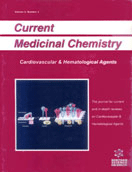Abstract
Protease-activated receptor 2 (PAR2) is the second member of a new subfamily of G-protein coupled receptors: the protease-activated receptors (PARs). At present, four different PARs have been cloned and all of them share the same basic mechanism of activation. A serine protease cleaves the extended, extracellular N-terminus of the receptor at a specific site within the protein chain to expose an N-terminal tethered ligand domain, which binds to and activates the cleaved receptor. In this manner, trypsin and mast cell β-tryptase activate PAR2. PARs are single use receptors because proteolytic activation is irreversible and the cleaved receptors are degraded in lysosomes. Thus, PARs play important roles in emergency situations, such as trauma and inflammation. Emerging evidence indicates that PAR2 is involved in the cardiovascular, pulmonary and gastrointestinal systems, where it controls inflammation and nociception. Work with selective agonists and knockout animals suggests a contribution of PAR2 to certain inflammatory diseases. Therefore, selective antagonists or agonists of these receptors may be useful therapeutic agents for the treatment of human diseases.
Keywords: Proteinase, Pathophysiological Roles, lysosomes, trauma, proteolytic activation
 17
17













